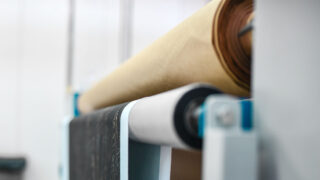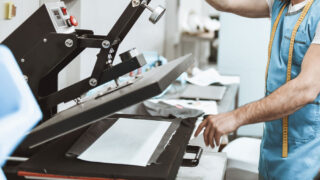Cotton Textile Printing
Preparation for Textile Printing
The golden rule in the dyeing of textiles is that “a fabric well prepared is a fabric half dyed.” This saying indicates the importance of good fabric preparation plays in producing high-quality final products.
There are several basic factors that are important for all preparation:
- The fabric for printing must be absorbent
- The fabric must be clean
- The fabric should be flat, smooth, and uniform in width without distortions in the construction
For textile printing, especially for cotton fabrics, quality fabric preparation is crucial for quality fabric printing. It has been reported that as many as 60% of textile printing defects can be traced to fabric preparation problems. Often the company that prints the fabric is not the one that prepares the fabric. When textile goods have been prepared for printing, they are normally referred to as PFP goods or “prepared for printing.”
Preparation processes vary widely depending on the fiber content, yarn type, and fabric construction but may include desizing, scouring, bleaching, washing, and open-width drying.
In the case of cotton, the minimum preparation sequence includes scouring and bleaching. Scouring removes all dirt, oil, and grease from the fabric and is necessary for uniform water absorption and dye penetration. Bleaching destroys all the naturally occurring color in the fabric and is necessary to provide a uniform white fabric base to allow for optimum print color brightness and reproducibility. It is essential that adequate rinsing follow either one of these processes.
Rinsing washes away the trash that was removed or the chemicals that were removed during scouring and bleaching. A clean fabric will ensure that the next wet process can be done without interference from unwanted residual components. For very high-quality printed cotton goods, either knits or wovens, mercerization may be an additional preparation process. Mercerization improves the smoothness, dimensional stability, strength, dye uptake, and luster of cotton fabrics. Mercerized cotton prints typically exhibit maximum color brightness and improved color fastness. Singeing or burning off the surface fibers for extremely hairy or fuzzy yarns or fabrics may be an additional step in the required preparation process.
Regardless of what the preparation sequence of a particular fiber or fabric construction may be, it is crucial that preparation be consistent, uniform, and repeatable. Any variability in the prepared fabric leads directly to poor print quality or print defects.
Fibers Impact Dye Choice
Dye is fiber specific. Your choice of dye is determined by the fibers which compose the textile fabric.
For example, 100% cotton fabric can be printed with reactive dyes, vat dyes, or other cotton-specific dyes. Alternatively, a cotton polyester blend requires two dye types combined in the print paste. One type is for the cotton fibers, such as reactive, and one type is for the polyester fibers, such as disperse.
Textile pigments may also be used. They are not dyes but colorants and require a binder or glue to affix them to the surface of the textile fibers.
Unlike dyes, pigments are not fiber specific, therefore a 60/40 cotton polyester blend could be printed with a single pigment. Pigments work equally well on 100% cotton fabrics and various fiber blends.
Yarn Type Impacts Color
Your choice of yarn will impact the color of your print.
Because print color is applied from one side of the fabric, the evenness, brightness, and depth of the color are very sensitive to the hairiness, twist, and luster of the yarns. For instance, the higher the yarn luster, the brighter the printed color. Fiber luster can also influence the appearance of the printed design in much the same way. If yarns are highly twisted, they may not allow print paste to penetrate deeply into the yarn bundle and this yields poor print color fastness. Additionally, fine to medium yarns generally are easier to print than large, bulky yarns or novelty yarns.
Fabric Type Impacts Print Quality
Your choice of fabric will inform which printing process you use, and impact the final quality of your print.
For example, wovens are normally easier to print than knits. This is because woven fabrics are much more dimensionally stable than knit fabrics. Fabrics with a flat surface are easier to print than fabrics with a pike surface. A good example of this difference is to compare the typical printing process for sheets with that of bath towels.
Most fabrics are normally printed on flat for rotary screen-printing machines and typically require a single squeegee stroke for the printing process. In contrast, bath towels are usually printed on flat screen-printing machines and may require as many as four squeegee strokes to force the print color down into the fabric pile. The extra squeegee strokes severely limit the printing production speed for towel fabric.
Any fabric with surface texture will present more printing challenges than a comparable flat surface fabric. Additionally, thin or sheer fabric may present more printing problems than a thicker fabric of the same fiber content.


